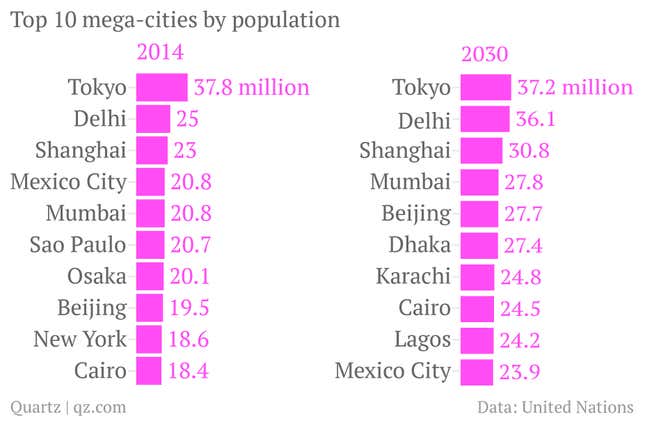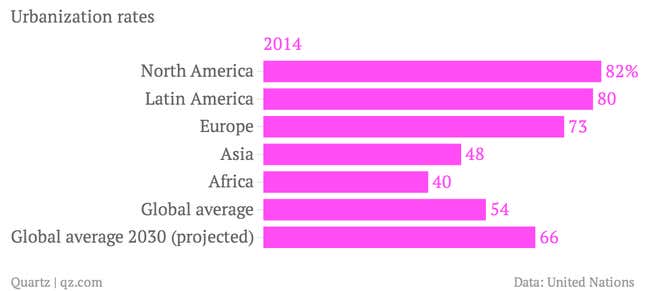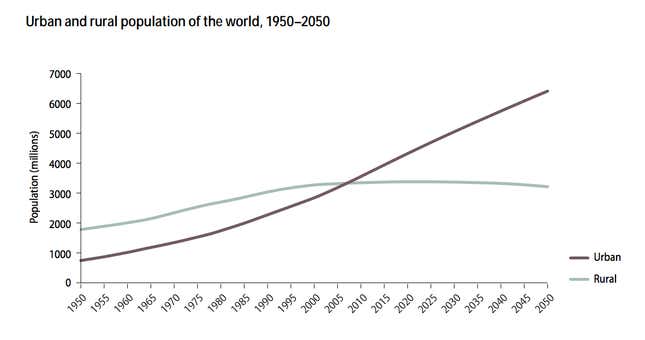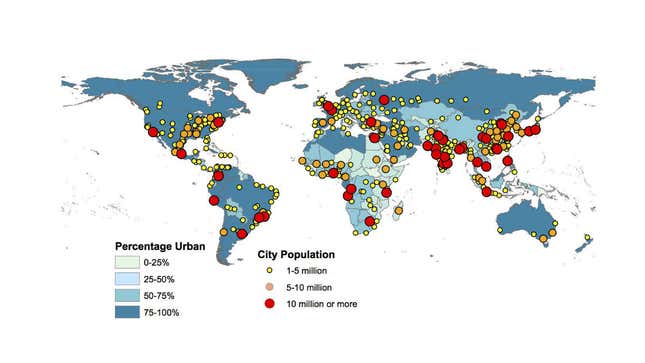Tokyo is the undisputed champion of mega-cities. With a population of 37.8 million, it dwarfs second-place Delhi. The Japanese capital has such a big lead in population that even though it’s expected to lose about half a million people over the next 16 years, it will still be the world’s biggest metropolis in 2030, according to a new report by the United Nations:

Some of the other mega-cities on the 2014 list won’t be quite as persistent—by 2030, New York, Osaka, and Sao Paulo will no longer make the top 10, and Mexico City will barely hang on as the sole representative outside of Asia and Africa. This reflects the major shift driven by the urbanization in Asia and Africa, particularly in India (404 million projected new city dwellers by 2030), China (292 million), and Nigeria (212 million).
Why is the balance shifting so radically? Mostly because the rest of the world is already highly urbanized, while Africa and Asia still have a long way to go:

Africa and Asia are home to nearly 90% of the world’s remaining rural population, the UN report notes. India has the most rural dwellers, with 857 million, followed by China’s 635 million. But those people are steadily moving into cities, and in the process tilting the percentage of the world’s population that lives in urban areas:

So what will the world map of mega-cities look like in 2030? Try to wrap your mind around this:
